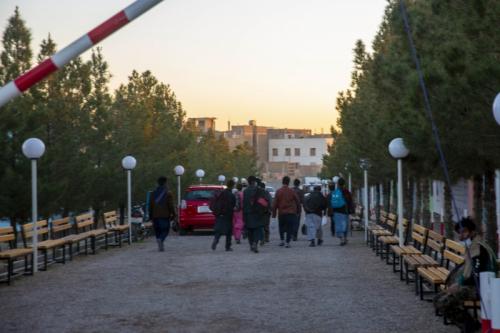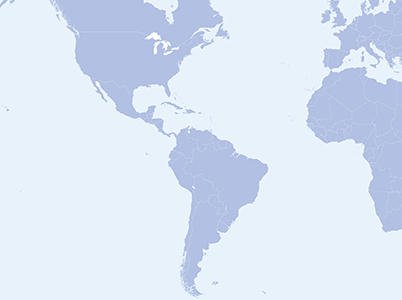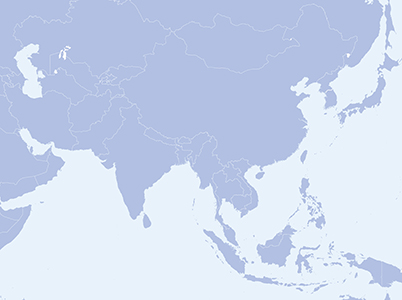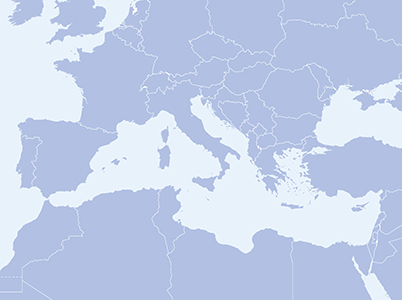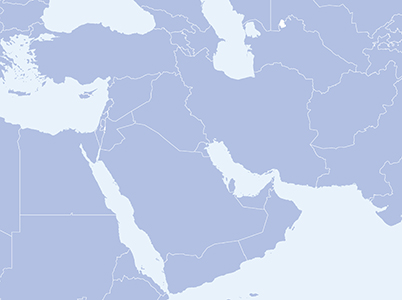| 2023.MMP0009 |
Iran to Türkiye |
38.65706324, 43.97719951
|
At a police checkpoint on Van-Özalp highway, Van, Türkiye |
Western Asia |
| 2023.MMP0023 |
Uncategorized |
37.422571, 34.876721
|
The Adana-Pozantı Highway in the Damlama district of Mersin's Tarsus district, Turkiye |
Western Asia |
| 2023.MMP0033 |
Uncategorized |
34.61342591, 36.31892821
|
On route between Chadra and Andqet, Akkar, Lebanon |
Western Asia |
| 2023.MMP0149 |
Türkiye-Europe land route |
41.20184031, 26.318883
|
Unspecified location in Meriç River, Meriç region, Türkiye |
Western Asia |
| 2023.MMP0150 |
Türkiye-Europe land route |
41.20184031, 26.318883
|
Unspecified location in Meriç region, Türkiye |
Western Asia |
| 2023.MMP0370 |
Türkiye-Europe land route |
41.89594357, 26.88381199
|
Süleymandanişment, Lalapaşa, Edirne, Türkiye on route to Evros river |
Western Asia |
| 2023.MMP0566 |
Uncategorized |
34.43297712, 36.10710855
|
Jayroun, Lebanon |
Western Asia |
| 2023.MMP0583 |
Türkiye-Europe land route |
40.91271268, 26.36965745
|
In Ipsala, Edirne province, Türkiye - travelling from Izmir towards Thessaloniki, Greece |
Western Asia |
| 2023.MMP0584 |
Türkiye-Europe land route |
41.71697242, 26.35148883
|
At the Kapıkule Türkiye-Bulgaria Border Gate, Edirne, Türkiye |
Western Asia |
| 2023.MMP0717 |
Uncategorized |
31.36887171, 35.34668543
|
In a minefield in an unspecified location, Dead Sea region, Israel |
Western Asia |
| 2023.MMP0841 |
Türkiye-Europe land route |
41.97084748, 27.40739782
|
Close to Bulgarian border, Kırklareli, Türkiye |
Western Asia |
| 2023.MMP0842 |
Türkiye-Europe land route |
41.84295684, 26.73845726
|
Remains found in Lalapaşa, Edirne, Türkiye |
Western Asia |
| 2023.MMP0843 |
Uncategorized |
38.4563337, 43.41077211
|
Near the Kurubaş Pass on the Van-Gürpınar highway en route from Kurubaş Removal Center, Van to Gaziantep, Türkiye |
Western Asia |
| 2023.MMP1027 |
Uncategorized |
34.63298761, 36.38562642
|
On the Syrian side at Obeidan irregular crossing, the Northern Lebanese-Syrian border (Wadi Khaled) |
Western Asia |
| 2023.MMP1028 |
Uncategorized |
34.41653259, 36.53726653
|
Unspecified location on the Northern Lebanese-Syrian border |
Western Asia |
| 2023.MMP1135 |
Eastern Route to/from EHOA |
13.319037, 43.204713
|
Off the coast of Mocha, Yemen - EHOA-Yemen crossing |
Western Asia |
| 2023.MMP1188 |
Türkiye-Europe land route |
41.006155, 28.807532
|
Sakiz Street, Kucukcekmece district, Istanbul, Turkiye |
Western Asia |
| 2023.MMP1201 |
Eastern Route to/from EHOA |
18.28006466, 48.35332592
|
Unspecified location by the Yemeni border in Saudi Arabia - Yemen to Gulf crossing |
Western Asia |
| 2023.MMP1202 |
Eastern Route to/from EHOA |
17.25620749, 43.20231
|
In the mountains of Ar Raqw, Monabbih District, Sa'dah Governorate, Yemen - Yemen to Gulf crossing |
Western Asia |
| 2023.MMP1203 |
Eastern Route to/from EHOA |
17.25620749, 43.20231
|
In the mountains of Ar Raqw, Monabbih District, Sa'dah Governorate, Yemen - Yemen to Gulf crossing |
Western Asia |
| 2023.MMP1204 |
Eastern Route to/from EHOA |
17.25620749, 43.20231
|
In the mountains of Ar Raqw, Monabbih District, Sa'dah Governorate, Yemen - Yemen to Gulf crossing |
Western Asia |
| 2023.MMP1205 |
Eastern Route to/from EHOA |
17.25620749, 43.20231
|
In the mountains of Ar Raqw, Monabbih District, Sa'dah Governorate, Yemen - Yemen to Gulf crossing |
Western Asia |
| 2023.MMP1206 |
Eastern Route to/from EHOA |
17.50640719, 43.49736907
|
Unspecified location by the Yemeni border in Saudi Arabia - Yemen to Gulf crossing |
Western Asia |
| 2023.MMP1207 |
Eastern Route to/from EHOA |
18.28006466, 48.35332592
|
Unspecified location by the Yemeni border in Saudi Arabia - Yemen to Gulf crossing |
Western Asia |
| 2023.MMP1208 |
Eastern Route to/from EHOA |
43.331784, 17.34758658
|
Al-Thabit, Qatabir District, Sa'dah Governorate, Yemen - Yemen to Gulf crossing |
Western Asia |
| 2023.MMP1209 |
Eastern Route to/from EHOA |
17.50640719, 43.49736907
|
Unspecified location by the Yemeni border in Saudi Arabia - Yemen to Gulf crossing |
Western Asia |
| 2023.MMP1210 |
Eastern Route to/from EHOA |
44.820744, 16.54874816
|
Al Ghar valley, Jawf Governorate, Yemen - Yemen to Gulf crossing |
Western Asia |
| 2023.MMP1211 |
Eastern Route to/from EHOA |
12.83495568, 44.92668287
|
Afraa, Madinat Asha'ab, Yemen |
Western Asia |
| 2023.MMP1212 |
Eastern Route to/from EHOA |
14.82818741, 44.33095366
|
Ash Sharwah, Muḩāfaz̧at Dhamār, Yemen |
Western Asia |
| 2023.MMP1213 |
Eastern Route to/from EHOA |
14.82818741, 44.33095366
|
Ash Sharwah, Muḩāfaz̧at Dhamār, Yemen |
Western Asia |
| 2023.MMP1214 |
Eastern Route to/from EHOA |
16.77661287, 43.43354709
|
Miftah, Ḥaydan District, Sa'dah Governorate, Yemen - Yemen to Gulf crossing |
Western Asia |
| 2023.MMP1215 |
Eastern Route to/from EHOA |
16.77661287, 43.43354709
|
Miftah, Ḥaydan District, Sa'dah Governorate, Yemen - Yemen to Gulf crossing |
Western Asia |
| 2023.MMP1216 |
Eastern Route to/from EHOA |
43.286431, 17.18004537
|
Monabbih District, Sa'dah Governorate, Yemen - Yemen to Gulf crossing |
Western Asia |
| 2023.MMP1217 |
Eastern Route to/from EHOA |
12.83495568, 44.92668287
|
Afraa, Madinat Asha'ab, Yemen |
Western Asia |
| 2023.MMP1218 |
Eastern Route to/from EHOA |
12.83495568, 44.92668287
|
Afraa, Madinat Asha'ab, Yemen |
Western Asia |
| 2023.MMP1219 |
Eastern Route to/from EHOA |
17.25620749, 43.20231
|
In the mountains of the Ar Raqw area, Monabbih District, Sa'dah Governorate, Yemen - Yemen to Gulf crossing |
Western Asia |
| 2023.MMP1220 |
Eastern Route to/from EHOA |
18.28006466, 48.35332592
|
Unspecified location by the Yemeni border in Saudi Arabia - Yemen to Gulf crossing |
Western Asia |
| 2023.MMP1221 |
Eastern Route to/from EHOA |
17.25620749, 43.20231
|
In the mountains of the Ar Raqw area, Monabbih District, Sa'dah Governorate, Yemen - Yemen to Gulf crossing |
Western Asia |
| 2023.MMP1222 |
Eastern Route to/from EHOA |
18.28006466, 48.35332592
|
Unspecified location by the Yemeni border in Saudi Arabia - Yemen to Gulf crossing |
Western Asia |
| 2023.MMP1223 |
Eastern Route to/from EHOA |
43.331784, 17.34758658
|
Al-Thabit, Qatabir District, Sa'dah Governorate, Yemen - Yemen to Gulf crossing |
Western Asia |
| 2023.MMP1224 |
Eastern Route to/from EHOA |
17.25620749, 43.20231
|
In the mountains of Ar Raqw, Monabbih District, Sa'dah Governorate, Yemen - Yemen to Gulf crossing |
Western Asia |
| 2023.MMP1225 |
Eastern Route to/from EHOA |
12.83495568, 44.92668287
|
Afraa, Madinat Asha'ab, Yemen |
Western Asia |
| 2023.MMP1226 |
Eastern Route to/from EHOA |
18.28006466, 48.35332592
|
Unspecified location by the Yemeni border in Saudi Arabia - Yemen to Gulf crossing |
Western Asia |
| 2023.MMP1227 |
Eastern Route to/from EHOA |
17.25620749, 43.20231
|
In the mountains of the Ar Raqw area, Monabbih District, Sa'dah Governorate, Yemen - Yemen to Gulf crossing |
Western Asia |
| 2023.MMP1228 |
Eastern Route to/from EHOA |
17.77861643, 52.61602115
|
Unspecified location by the Omani border in Yemen |
Western Asia |
| 2023.MMP1229 |
Eastern Route to/from EHOA |
17.25620749, 43.20231
|
In the mountains of the Ar Raqw area, Monabbih District, Sa'dah Governorate, Yemen - Yemen to Gulf crossing |
Western Asia |
| 2023.MMP1230 |
Eastern Route to/from EHOA |
17.25620749, 43.20231
|
In the mountains of the Ar Raqw area, Monabbih District, Sa'dah Governorate, Yemen - Yemen to Gulf crossing |
Western Asia |
| 2023.MMP1231 |
Eastern Route to/from EHOA |
43.331784, 17.34758658
|
Al-Thabit, Qatabir District, Sa'dah Governorate, Yemen - Yemen to Gulf crossing |
Western Asia |
| 2023.MMP1232 |
Eastern Route to/from EHOA |
18.28006466, 48.35332592
|
Unspecified location by the Yemeni border in Saudi Arabia - Yemen to Gulf crossing |
Western Asia |
| 2023.MMP1233 |
Eastern Route to/from EHOA |
18.28006466, 48.35332592
|
Unspecified location by the Yemeni border in Saudi Arabia - Yemen to Gulf crossing |
Western Asia |
| 2023.MMP1234 |
Eastern Route to/from EHOA |
12.83495568, 44.92668287
|
Afraa, Madinat Asha'ab, Yemen - Yemen to Gulf crossing |
Western Asia |
| 2023.MMP1235 |
Eastern Route to/from EHOA |
43.242697, 17.24950466
|
Bani Ayash, Sa'dah governorate, Yemen - Yemen to Gulf crossing |
Western Asia |
| 2023.MMP1236 |
Eastern Route to/from EHOA |
17.25620749, 43.20231
|
In the mountains of Ar Raqw, Monabbih District, Sa'dah Governorate, Yemen - Yemen to Gulf crossing |
Western Asia |
| 2023.MMP1237 |
Eastern Route to/from EHOA |
17.25620749, 43.20231
|
In the mountains of Ar Raqw, Monabbih District, Sa'dah Governorate, Yemen - Yemen to Gulf crossing |
Western Asia |
| 2023.MMP1238 |
Eastern Route to/from EHOA |
17.25620749, 43.20231
|
In the mountains of Ar Raqw, Monabbih District, Sa'dah Governorate, Yemen - Yemen to Gulf crossing |
Western Asia |
| 2023.MMP1239 |
Eastern Route to/from EHOA |
17.36953038, 43.29724152
|
Qatabir, Sa'dah Governorate, Yemen - Yemen to Gulf crossing |
Western Asia |
| 2023.MMP1240 |
Eastern Route to/from EHOA |
17.25620749, 43.20231
|
In the mountains of Ar Raqw, Monabbih District, Sa'dah Governorate, Yemen - Yemen to Gulf crossing |
Western Asia |
| 2023.MMP1242 |
Eastern Route to/from EHOA |
17.25620749, 43.20231
|
In the mountains of Ar Raqw, Monabbih District, Sa'dah Governorate, Yemen - Yemen to Gulf crossing |
Western Asia |
| 2023.MMP1243 |
Eastern Route to/from EHOA |
17.25620749, 43.20231
|
In the mountains of Ar Raqw, Monabbih District, Sa'dah Governorate, Yemen - Yemen to Gulf crossing |
Western Asia |
| 2023.MMP1244 |
Eastern Route to/from EHOA |
18.28006466, 48.35332592
|
Unspecified location by the Yemeni border in Saudi Arabia - Yemen to Gulf crossing |
Western Asia |
| 2023.MMP1245 |
Eastern Route to/from EHOA |
17.36953038, 43.29724152
|
Qatabir, Sa'dah Governorate, Yemen - Yemen to Gulf crossing |
Western Asia |
| 2023.MMP1246 |
Eastern Route to/from EHOA |
18.28006466, 48.35332592
|
Unspecified location by the Yemeni border in Saudi Arabia - Yemen to Gulf crossing |
Western Asia |
| 2023.MMP1247 |
Eastern Route to/from EHOA |
17.25620749, 43.20231
|
In the mountains of Ar Raqw, Monabbih District, Sa'dah Governorate, Yemen - Yemen to Gulf crossing |
Western Asia |
| 2023.MMP1248 |
Eastern Route to/from EHOA |
18.28006466, 48.35332592
|
Unspecified location by the Yemeni border in Saudi Arabia - Yemen to Gulf crossing |
Western Asia |
| 2023.MMP1249 |
Eastern Route to/from EHOA |
18.28006466, 48.35332592
|
Unspecified location by the Yemeni border in Saudi Arabia - Yemen to Gulf crossing |
Western Asia |
| 2023.MMP1250 |
Eastern Route to/from EHOA |
17.35966342, 46.39775959
|
Unspecified location by the Yemeni border in Saudi Arabia - Yemen to Gulf crossing |
Western Asia |
| 2023.MMP1251 |
Eastern Route to/from EHOA |
18.28006466, 48.35332592
|
Unspecified location by the Yemeni border in Saudi Arabia - Yemen to Gulf crossing |
Western Asia |
| 2023.MMP1275 |
Eastern Route to/from EHOA |
15.08077431, 47.83847143
|
Alghar, Qarn Salifi, Yemen - EHOA-Yemen crossing |
Western Asia |
| 2023.MMP1287 |
Türkiye-Europe land route |
41.774197, 26.340055
|
Unspecified location on the Turkiye-Bulgaria border |
Western Asia |
| 2023.MMP1304 |
Eastern Route to/from EHOA |
17.21572615, 43.20670652
|
Howgabah, Monabbih district, Sa'ada governorate, Yemen - Yemen to Gulf crossing |
Western Asia |
| 2023.MMP1489 |
Eastern Route to/from EHOA |
18.28006466, 48.353326
|
Unspecified location by the Yemeni border in Saudi Arabia |
Western Asia |
| 2023.MMP1490 |
Eastern Route to/from EHOA |
17.25620749, 43.20231
|
In the mountains of the Ar Raqw area, Monabbih District, Sa'dah Governorate, Yemen |
Western Asia |
| 2023.MMP1491 |
Eastern Route to/from EHOA |
15.08077431, 47.838471
|
Alghar, Qarn Salifi, Yemen |
Western Asia |
| 2023.MMP1492 |
Eastern Route to/from EHOA |
17.25620749, 43.20231
|
In the mountains of the Ar Raqw area, Monabbih District, Sa'dah Governorate, Yemen |
Western Asia |
| 2023.MMP1493 |
Eastern Route to/from EHOA |
17.30079776, 44.1741329
|
Afraa, Yemen |
Western Asia |
| 2023.MMP1494 |
Eastern Route to/from EHOA |
17.25620749, 43.20231
|
In the mountains of the Ar Raqw area, Monabbih District, Sa'dah Governorate, Yemen |
Western Asia |
| 2023.MMP1495 |
Eastern Route to/from EHOA |
17.25620749, 43.20231
|
In the mountains of the Ar Raqw area, Monabbih District, Sa'dah Governorate, Yemen |
Western Asia |
| 2023.MMP1496 |
Eastern Route to/from EHOA |
17.30079776, 44.1741329
|
Afraa, Yemen |
Western Asia |
| 2023.MMP1497 |
Eastern Route to/from EHOA |
17.25620749, 43.20231
|
In the mountains of the Ar Raqw area, Monabbih District, Sa'dah Governorate, Yemen |
Western Asia |
| 2023.MMP1498 |
Eastern Route to/from EHOA |
17.24201947, 43.236293
|
Bani Ayash, Sa'dah Governorate, Yemen |
Western Asia |
| 2023.MMP1499 |
Eastern Route to/from EHOA |
17.30079776, 44.1741329
|
Afraa, Yemen |
Western Asia |
| 2023.MMP1500 |
Eastern Route to/from EHOA |
17.30079776, 44.1741329
|
Afraa, Yemen |
Western Asia |
| 2023.MMP1501 |
Eastern Route to/from EHOA |
17.25620749, 43.20231
|
In the mountains of the Ar Raqw area, Monabbih District, Sa'dah Governorate, Yemen |
Western Asia |
| 2023.MMP1502 |
Eastern Route to/from EHOA |
15.08077431, 47.838471
|
Alghar, Qarn Salifi, Yemen |
Western Asia |
| 2023.MMP1503 |
Eastern Route to/from EHOA |
17.30079776, 44.1741329
|
Afraa, Yemen |
Western Asia |
| 2023.MMP1504 |
Eastern Route to/from EHOA |
17.25620749, 43.20231
|
In the mountains of the Ar Raqw area, Monabbih District, Sa'dah Governorate, Yemen |
Western Asia |
| 2023.MMP1505 |
Eastern Route to/from EHOA |
17.25620749, 43.20231
|
In the mountains of the Ar Raqw area, Monabbih District, Sa'dah Governorate, Yemen |
Western Asia |
| 2023.MMP1506 |
Eastern Route to/from EHOA |
17.30079776, 44.1741329
|
Afraa, Yemen |
Western Asia |
| 2023.MMP1507 |
Eastern Route to/from EHOA |
17.30079776, 44.1741329
|
Afraa, Yemen |
Western Asia |
| 2023.MMP1508 |
Eastern Route to/from EHOA |
17.30079776, 44.1741329
|
Afraa, Yemen |
Western Asia |
